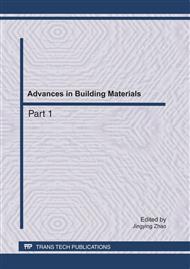p.1851
p.1856
p.1862
p.1867
p.1872
p.1877
p.1882
p.1886
p.1891
Engineering Application on Steel-Tube Bored Grouting Anti-Sliding Retaining Wall in the Treatment of Landslide
Abstract:
Steel-tube bored grouting anti-sliding retaining wall is a kind of technique combined with grouting and micropiles, treated as the retaining wall in mechanics analyzing. It is the significant feature that steel-tube bored grouting anti-sliding retaining wall change the partial sliding mass to anti-sliding mass. Taking the case of landslide located in south K108 of Guangdong segment of Beijing-Zhuhai highway, the landslide is reinforced by steel-tube bored grouting anti-sliding retaining wall and discharged groundwater from sliding mass. The K108 landslide is in the situation of stability by means of displacement analysis on monitoring bores and stability computation. The result of treatment show that the steel-tube bored grouting anti-sliding retaining wall is an effective method on treating landslide.
Info:
Periodical:
Pages:
1872-1876
Citation:
Online since:
May 2011
Authors:
Keywords:
Price:
Сopyright:
© 2011 Trans Tech Publications Ltd. All Rights Reserved
Share:
Citation:


